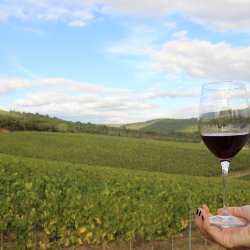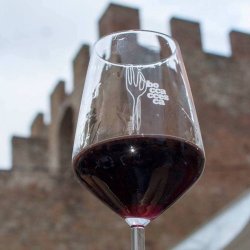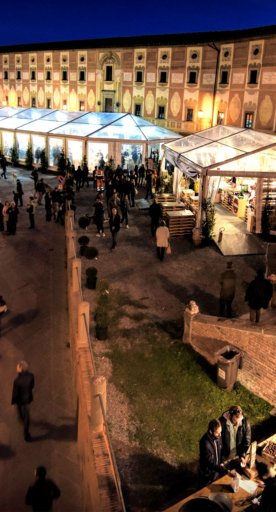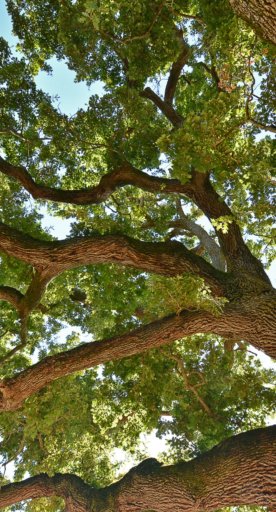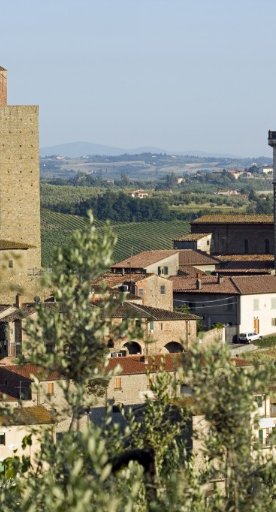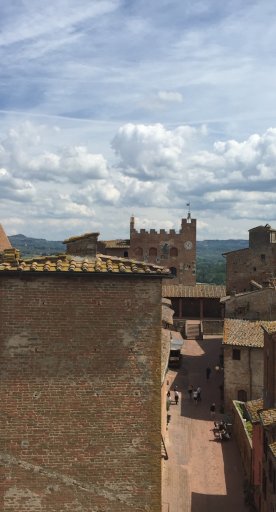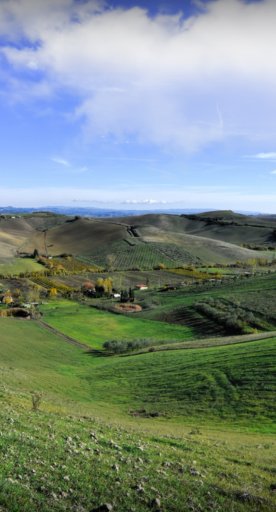10 unmissable museums in the Empolese Valdelsa and Montalbano area
Leonardiano Museum, Empoli Glass Museum and Montespertoli Wine Museum: discover the most important cultural centres of Empolese Valdelsa and Montalbano
Leonardo da Vinci's inventions, the art of Pontormo and Benozzo Gozzoli, the history of the Medici family, the tradition of craftsmanship such as artistic ceramics and the history of Chianti: these are just some routes to explore when visiting the museums of the Empolese Valdelsa and Montalbano region.
From the city of Empoli, moving first towards the Montalbano region (Vinci, Fucecchio, Cerreto Guidi, Capraia and Limite) and then in the Valdelsa region (Montelupo Fiorentino, Castelfiorentino, Certaldo, Montespertoli): here are 10 unmissable museums.
Don’t forget to purchase the combo ticket (MUDEV ticket) that includes these 10 museums.
-
1.MuVe - Glass Museum (Empoli)
-
2.Museum of the Collegiate Church (Empoli)
-
3.Museo Leonardiano museum (Vinci)
-
4.Fucecchio Civic Museum (Fucecchio)
-
5.Historical Hunting and Territorial Museum (Cerreto Guidi)
-
6.Rowing Museum in Limite sull'Arno (Capraia and Limite)
-
7.Museum of Ceramics (Montelupo Fiorentino)
-
8.Be.Go Museum (Castelfiorentino)
-
9.Palazzo Pretorio – Town hall (Certaldo)
-
10.Wine Museum (Montespertoli)
MuVe - Glass Museum (Empoli)

Housed in the old Salt warehouse, the Glass Museum tells the story of one of Empoli's most important productions: artistic glass and, especially, green glass.
The fascinating museum itinerary features environmental reconstructions, videos and documentaries. It's possible to retrace the phases of the glass production process and admire the high-quality processing techniques of master glassmakers, applied to the production of green and coloured artistic glass which made Empoli a point of reference in Italy in the mid 20th century.
Museum of the Collegiate Church (Empoli)

This is one of the oldest ecclesiastical museums in Italy, founded in 1859. The Museo della Collegiata, housed in the historic Collegiate Church of Sant'Andrea in the heart of Empoli, gathers authentic masterpieces by Tuscan artists from the 14th to the 16th centuries.
The numerous works of art in the museum make it one of the most important in the Valdelsa region: Masolino da Panicale's frescoes, Filippo Lippi's paintings, Bernardo Rossellino's baptismal font and glazed terracottas by the Della Robbia workshop.
Museo Leonardiano museum (Vinci)

Leonardo da Vinci was not only an artist but also a great scientist. The Museo Leonardiano in Vinci, Leonardo's birthplace, is dedicated to his passion for science and technology. The museum exhibits the machines designed by Leonardo and reconstructed on the basis of his drawings and sketches. The display includes his studies on flight and the movement of water, his war machines and those dedicated to textile manufacturing with more than 80 original models and reconstructions documenting Leonardo’s wide range of interests.
Housed in the Palazzina Uzielli and in the Conti Guidi castle, the Museo Leonardiano is suitable for both adults and children with multiple initiatives for families. After visiting the museum, you can complete your Leonardo route by exploring Leonardo’s birthplace in Anchiano.
Fucecchio Civic Museum (Fucecchio)

Housed in the splendid setting of Palazzo Corsini, the Civic Museum of Fucecchio tells the story of the town and the area between the Cerbaie hills and the lower Valdinievole and Valdarno areas.
The visit includes three main sections: archaeology, history and art, and nature. Visitors can discover finds from the Palaeolithic era, learn the history of the Conti Cadolingi - who built the Salamarzana Castle, the ancient centre of Fucecchio - admire works of art such as the Madonna and Child Jesus by Zanobi Machiavelli, magnificent objects of sacred art, and a room dedicated to the paintings of the modern Fucecchio painter, Arturo Checchi.
Don't miss the over 300 examples of fossil and contemporary fauna in the natural history section, including many species commonly found in the area of the nearby Fucecchio Marshes.
Historical Hunting and Territorial Museum (Cerreto Guidi)

Exhibited in the majestic Medici Villa in Cerreto Guidi, a UNESCO heritage site, the Historical Hunting and Territorial Museum displays an important collection of war and hunting weapons dating from the 17th-19th centuries.
Inspired by the historic use of the villa by the Medici family, it was the first Italian museum to be dedicated to hunting and weapons. Among the most valuable pieces on display are Francesco Gonzaga’s swords, those of Grand Prince Ferdinando de' Medici and a 'Schiopetto' (Musket) dating from 1417. Don't miss the valuable collection of portraits of the Medici family, with paintings by Guercino, Domenichino and Luca Giordano.
Rowing Museum in Limite sull'Arno (Capraia and Limite)

The Museo Remiero (Rowing Museum) was created to promote the heritage of shipbuilding techniques, handed down by the shipwrights from Limite sull'Arno, and retraces the history of this ancient tradition.
Thanks to photographs, documents, tools used by the shipwrights and above all, small-scale models, it's possible to discover how the boats were built and used to transport goods along the Arno River in past centuries, while taking a fascinating journey through the history of shipbuilding.
Museum of Ceramics (Montelupo Fiorentino)

The town of Montelupo Fiorentino is world-famous for its artistic ceramics and there's no better place to learn about it than the Museum of Ceramics. Visitors can learn about the techniques used in the production of Montelupo Fiorentino ceramics and admire the collection of about one thousand ceramics, dating from the late 13th to the 18th centuries. Among the most valuable pieces is the famous "Rosso di Montelupo", a majolica basin dating from 1509.
With a dedicated interactive route for children and numerous workshops available, the museum of ceramics is suitable for families.
Be.Go Museum (Castelfiorentino)

Benozzo Gozzoli is one of the great artists of the Empolese Valdelsa region, a highly appreciated painter in the 15th century. The Bego Museum in Castelfiorentino is dedicated to him and houses the frescoes created for the imposing tabernacles of Madonna della Tosse and Madonna della Visitazione.
Thanks to the interactive route and the app created by the Museum, visitors can discover not only the history of the frescoes, but also the painter’s life and his most important works. The Bego Museum also organizes dedicated routes and activities for people with motor, visual and intellectual impairments.
Palazzo Pretorio – Town hall (Certaldo)

The symbol of Certaldo, Palazzo Pretorio, is the historic Courthouse and today houses 3 museums: Museo della Giustizia (Justice Museum), the Contemporary Art Gallery and the Archaeological Section.
Thanks to the new multimedia exhibition, visitors can discover the history of Palazzo Pretorio and the territory of Certaldo.
Start from the Chamber of the Knight where the investigations were held, before heading to the Audience Chamber and the prisons. Among the most important works is the Tabernacle of the Executed by Benozzo Gozzoli. The Contemporary Art Gallery hosts temporary art exhibitions, and the Archaeological Section reveals the history of the area from the Etruscan period to the Middle Ages.
Wine Museum (Montespertoli)

Wine is the top product in Montespertoli and has a dedicated museum. The Wine Museum is located just outside Montespertoli, along the Wine Route, and retraces the processing techniques that have been used for centuries that transform bunches of Sangiovese grapes into excellent Chianti wines with the designation of origin, "Montespertoli".
What makes the museum interesting is the reconstruction of the spaces where winemaking takes place, with wine cellars, where tools and instruments used by the vintners are on display together with photographs and didactic panels that are suitable for both experts and amateurs.





